In the early morning, the RWA sector project MANTRA (OM) fell 90% in a short period of time, plummeting from US$6 to US$0.5, and its market value evaporated by more than US$5.5 billion.
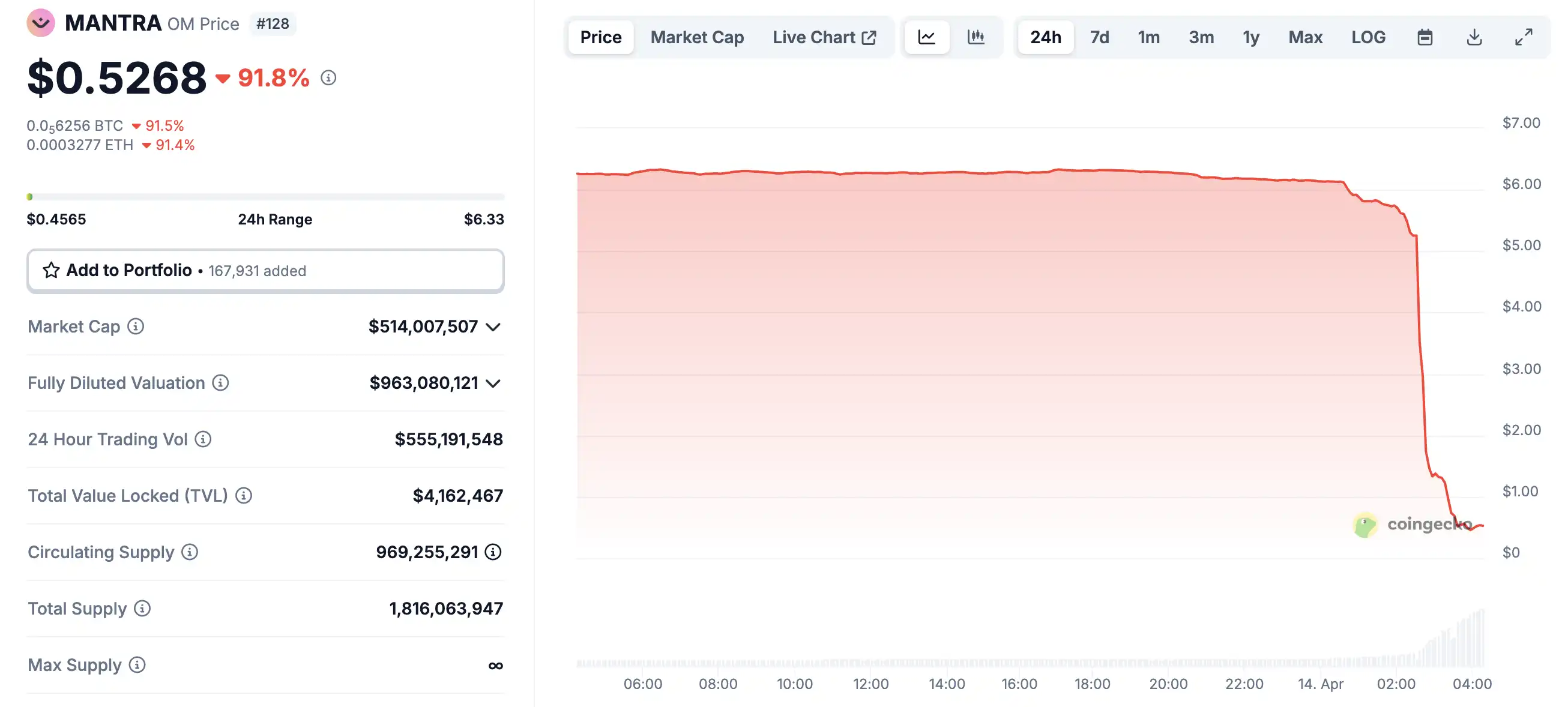
Three hours later, the MANTRA team issued a statement saying that the decline was caused by irrational liquidation and had nothing to do with the project itself, and that it was not the team's fault.
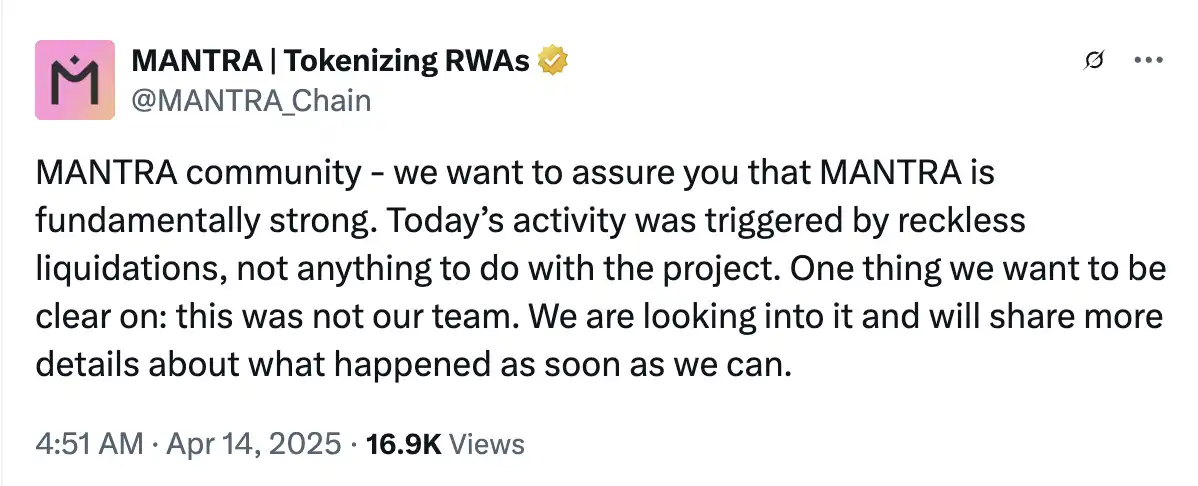
Subsequently, OM rose from around $0.5 to $1.2, and was briefly shorted. According to Coinglass data, in just four hours, the OM contract liquidation volume reached $58 million.
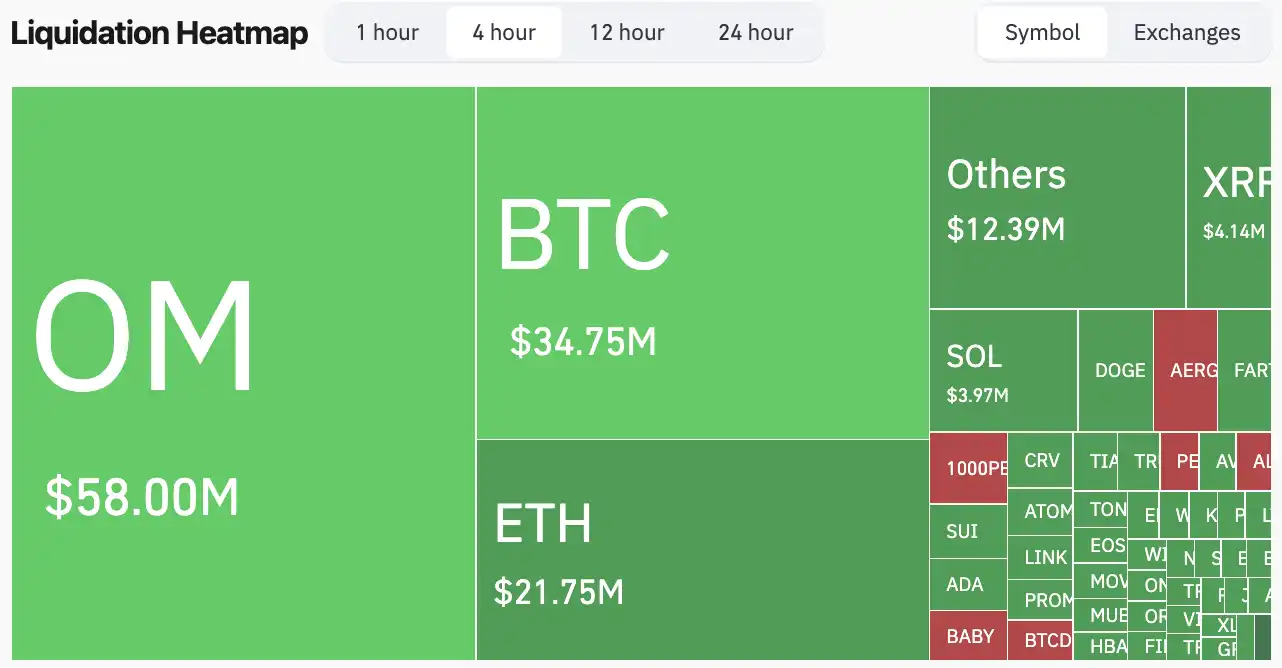
Before this plunge, OM had experienced several violent price increases since November last year and was called "the powerful monster coin" by the community.
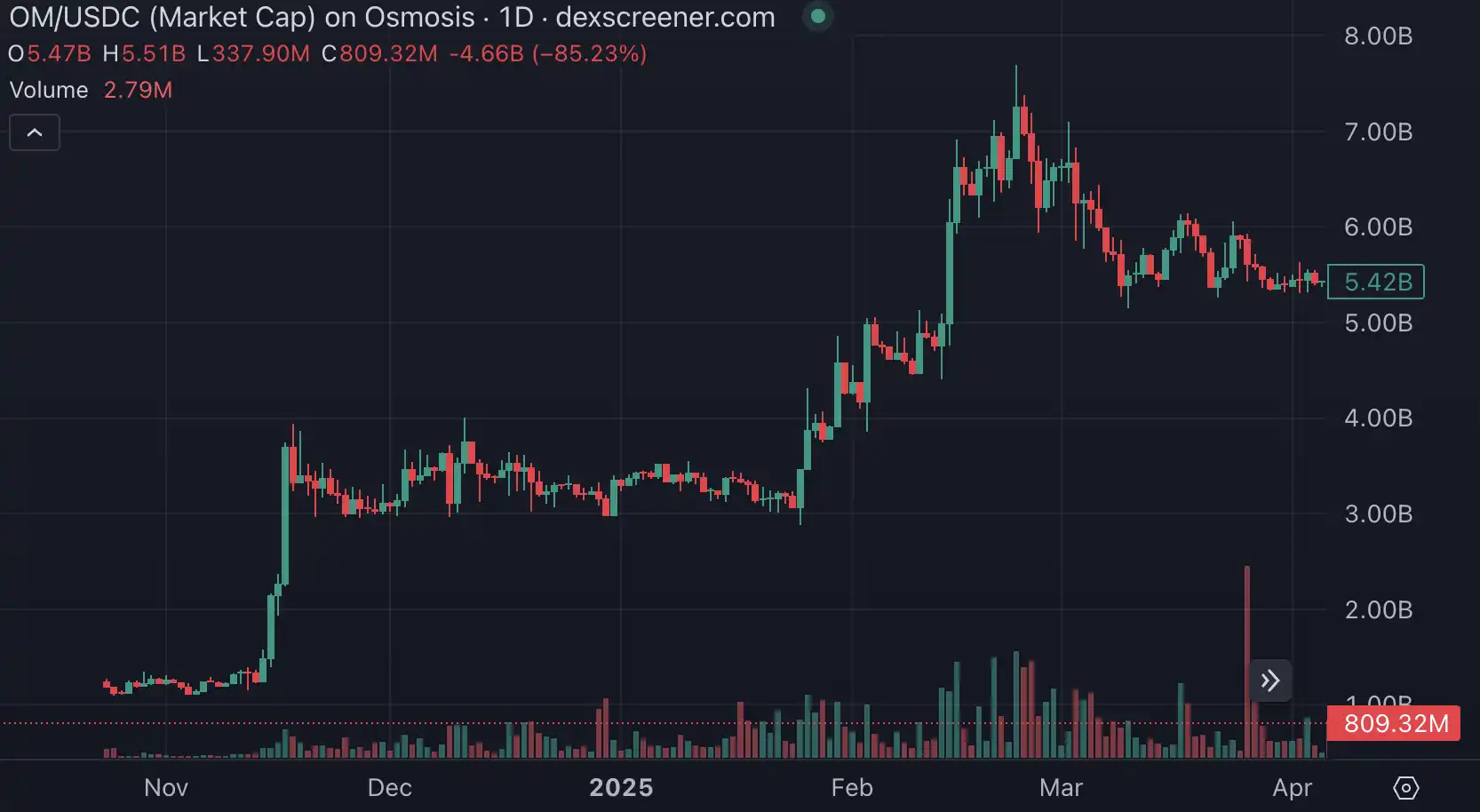
OTC trading or team dumping? OM's life of high control
Recently, the community and multiple data detection tool websites have released news that OM's large-scale addresses have withdrawn coins and transferred them to the trading platform. There are also rumors that OM has completed several OTC transactions with discounts of 50% or more. When large-scale investors start to dump the market, OTC buyers will also panic and sell.
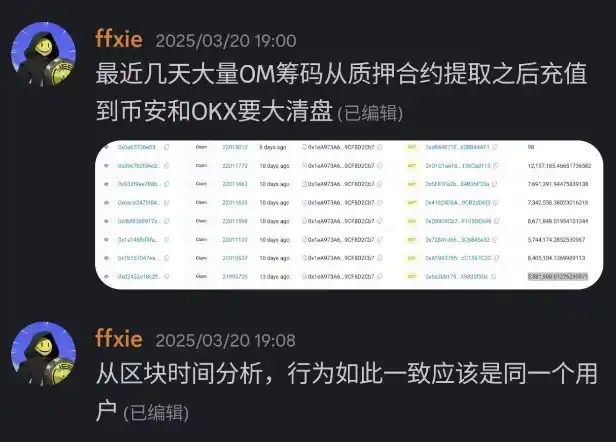
On March 25, according to TheDataNerd, the address of Laser DIgital, MANTRA's investment institution, deposited 1.7 million OMs worth $11.49 million into Binance. Last year, the wallet accumulated a total of 27 million OMs and currently still holds 6.756 million OMs worth $45.67 million.
Yesterday, according to Arkham monitoring, the address 0xA8...A84f withdrew 776,000 OMs from Polygon's StakedOM contract, worth approximately US$5.84 million.
According to Genç Trader monitoring, wallet address 0x9a…1a28 transferred about $20 million of OM to OKX 23 hours ago. According to past records, this address withdrew about $40 million of OM from Binance a month ago, and was one of the whales that pushed up the price of the coin.
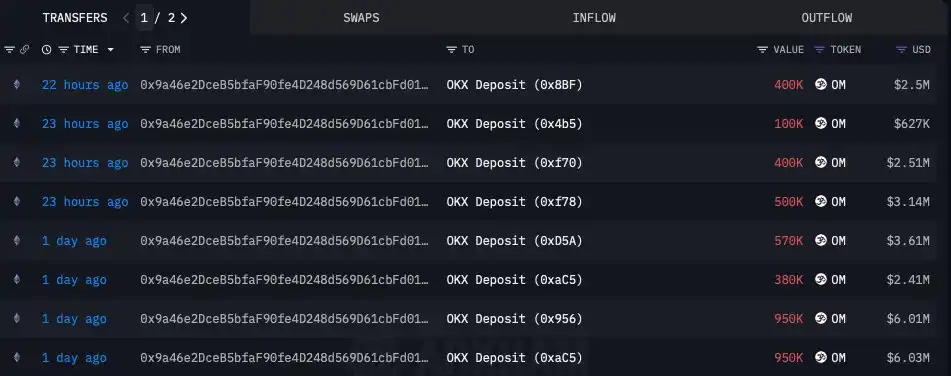
The dumping of shares by several large OM holders is believed to be the direct cause of the plunge, but the community believes that perhaps all this was premeditated.
Airdrop PUA
Last November, MANTRA officially announced its airdrop rules, stating that the previous "3-month cliff period, followed by initial liquidity allocation and 9-month linear unlocking" would be changed to "shortening the cliff period to 1 month, followed by 11 months of linear unlocking", which aroused strong dissatisfaction in the community.
In the early days, MANTRA stimulated user enthusiasm through high-profile expectation management, announcing that it would distribute 50 million OM tokens and promised to unlock 20% of them as soon as they went online. The airdrop would be completed within one month.
However, in actual implementation, MANTRA has continuously modified the airdrop rules, first changing "unlocking upon launch" to "linear release after one month", and then further postponing it to "10% first phase release, and the remaining vesting period is up to three years". At the same time, in conjunction with the roadmap, token distribution structure and other mechanism changes, MANTRA has essentially turned community traffic into a long-term lock-up tool by continuously extending the cashing cycle.
When user sentiment rebounded, the project introduced a governance voting mechanism to transfer responsibility in the form of "community consensus", but in actual operation, the voting rights were concentrated in the hands of the project team or related parties, and the results were highly controllable. Finally, some early participants were excluded from the airdrop list, and the project froze their rights and interests on the grounds of "Sybil attack" without disclosing the detailed basis.
Height control panel
The reason why OM has been rising in the past six months is the team's high degree of control. According to KOL @nihaovand, there are usually three waves of buying communities in different price ranges that take turns to enter the market and jointly push up the token price. At the same time, the project will arrange an off-site exit channel for the holders. The funds obtained after the exit will be used to increase the coin price, paving the way for the next wave of off-site capital inflow.
Previously, there were multiple reports that the MANTRA team controlled 90% of the supply of OM tokens. Crypto analyst Mosi once wrote an article analyzing how a project with only $4 million TVL could have more than $10 billion FDV. The answer is that the team controls most of the OM circulation. The MANTRA team holds 792M OM (90% of the supply) in a single wallet, and the team is too lazy to even spread the supply across multiple wallets.
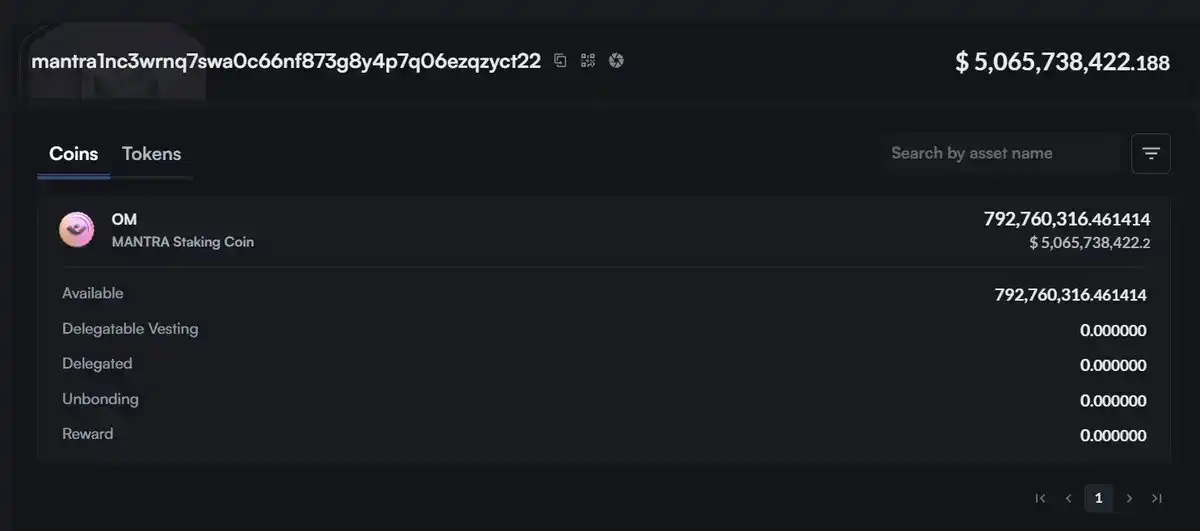
What is the actual circulation amount of OM?
According to Mosi’s analysis, the actual circulation of OM = 980 million (circulating supply) - 792 million OM (the part controlled by the team) = 188 million OM
However, this number may not be accurate. The team still controls a significant portion of OM, which they use to perform Sybil attacks on their own airdrops, further squeeze exit liquidity, and continue to control the circulation. They deployed about 100 million OM to Sybil attack their own airdrops, so this part of the tokens also needs to be deducted from the real circulation.
Ultimately, there may only be 88 million OM in circulation, which makes it easy to manipulate the price of OM and liquidate any short positions. Traders should be afraid of shorting OM because the team controls most of the circulation and can push or drop the price at will.
Mosi believes that OM may involve Tritaurian Capital — which borrowed $1.5 million from @SOMA_finance (@jp_mullin888 is the co-founder of SOMA, and Tritaurian is owned by Jim Preissler, JPM's boss at Trade.io) — as well as some funds and market makers in the Middle East. These operations further compress the true circulation and make it more difficult to calculate.
This may also explain their reluctance to release the airdrop and their decision to implement a lock-up period. If they did carry out the airdrop, the actual circulating supply would increase significantly, which could cause a significant drop in price.
This isn’t some complex financial engineering, but it does look like an intentional plan to reduce the true circulation of tokens and could easily drive up or down the price of OM.













